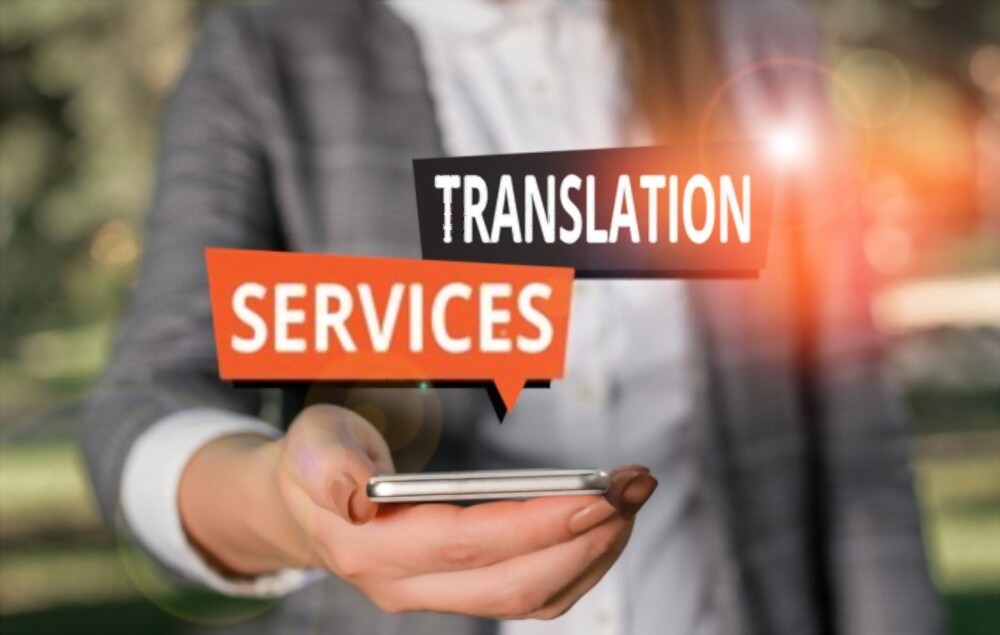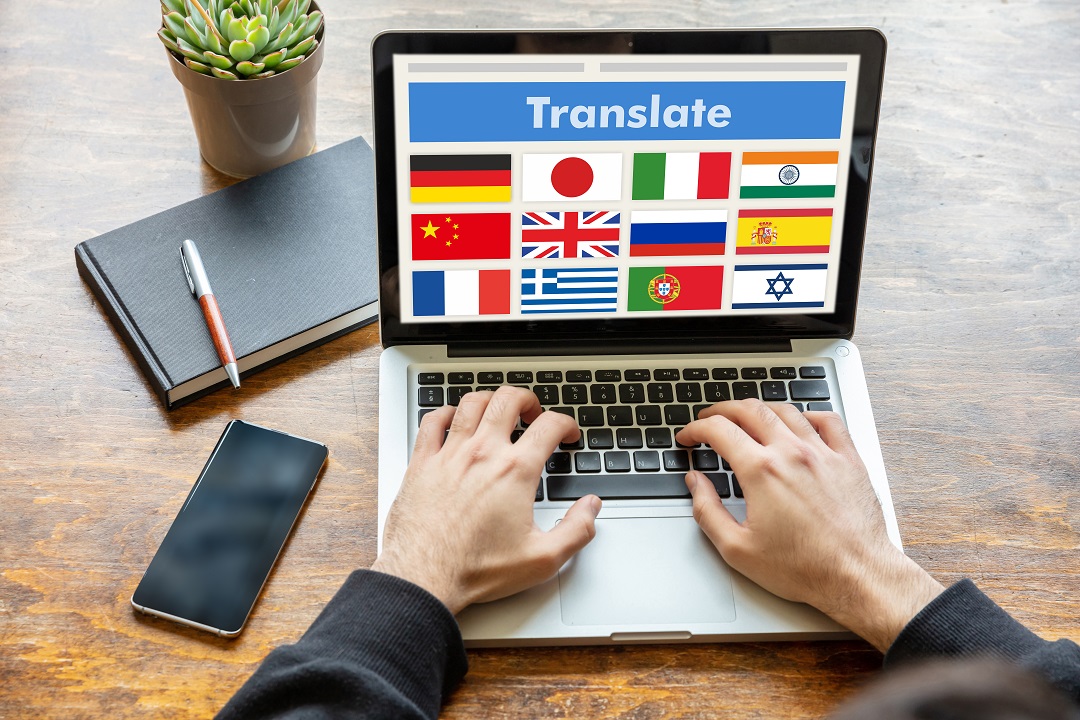Translation services play a vital role in bridging linguistic and cultural gaps, facilitating communication across borders, and enabling businesses, organizations, and individuals to reach broader audiences. The best translation services offer a comprehensive range of features and capabilities designed to deliver accurate, culturally appropriate, and timely translations across various languages and industries. In this essay, we will explore what sets the best translation services apart and the key components of their offerings.
Introduction to Translation Services:

Translation services encompass a wide array of activities aimed at converting written or spoken content from one language to another while preserving its meaning, style, and cultural nuances. These services cater to diverse sectors, including business, legal, medical, technical, academic, and literary fields. The demand for translation services has surged in recent years due to globalization, increased international trade, and the need for multilingual content in the digital age.
Key Components of the Best Translation Services:
- Professional Translators and Linguists: The hallmark of top-tier translation services is their team of skilled translators and linguists who possess native or near-native proficiency in the target language(s) and expertise in specific subject matters. These professionals are often certified or accredited by reputable organizations and undergo rigorous screening and training processes to ensure the highest standards of accuracy and quality.
- Advanced Technology and Tools: Leading translation services leverage cutting-edge technologies, including machine translation, computer-assisted translation (CAT) tools, and artificial intelligence (AI) algorithms, to enhance efficiency and consistency in the translation process. These tools aid human translators by automating repetitive tasks, facilitating terminology management, and improving translation memory utilization.
- Quality Assurance Processes: Quality assurance is paramount in translation services to maintain accuracy, consistency, and adherence to client requirements. The best providers implement robust quality control measures, such as multi-step review processes, proofreading by native speakers, and adherence to industry standards (e.g., ISO 17100), to ensure the reliability and fidelity of translated content.
- Cultural Competence and Localization: Effective translation goes beyond linguistic accuracy; it also entails cultural sensitivity and adaptation to the target audience’s cultural norms, preferences, and expectations. The best translation services offer localization services, wherein content is tailored to resonate with the target culture, taking into account factors like idiomatic expressions, cultural references, and local regulations.
- Specialized Industry Expertise: Different industries have unique terminology, jargon, and communication requirements. The best translation services have translators and teams specializing in various domains, such as legal, medical, technical, marketing, and financial translation. This specialization ensures that translations are not only linguistically accurate but also contextually relevant and industry-specific.
- Flexibility and Scalability: Clients’ translation needs can vary in terms of volume, urgency, and language combinations. Top translation services offer flexible and scalable solutions to accommodate varying requirements, whether it’s a small document translation project or a large-scale multinational localization initiative. This may include on-demand services, dedicated project managers, and customizable workflows.
- Data Security and Confidentiality: Given the sensitive nature of many translation projects, data security and confidentiality are paramount considerations. The best translation services employ robust encryption protocols, secure file transfer mechanisms, and stringent confidentiality agreements to protect clients’ confidential information and intellectual property.
- Customer Support and Communication: Seamless communication and responsive customer support are integral to the client experience in translation services. Leading providers prioritize clear and timely communication, providing clients with dedicated project managers or account managers who serve as primary points of contact and ensure that projects progress smoothly from inception to completion.

- Scalable Pricing Models: Transparent and competitive pricing models are essential for clients to budget effectively and evaluate the cost-effectiveness of translation services. The best providers offer flexible pricing structures tailored to the specific needs and budget constraints of individual clients, whether it’s per-word pricing, hourly rates, or project-based quotes.
- Continuous Improvement and Innovation: The translation landscape is constantly evolving with advancements in technology, changes in language usage, and emerging industry trends. Top-tier translation services invest in ongoing research, development, and training initiatives to stay abreast of the latest innovations and best practices, ensuring that they deliver the highest quality and value to their clients.
Let’s delve deeper into each of the key components of the best translation services and explore the nuances of their offerings:
1. Professional Translators and Linguists:
/translate-keyboard-d00059f587544c41a21d8db1ebb58e93.jpg)
The backbone of any reputable translation service is its team of skilled translators and linguists. These professionals are not only fluent in the source and target languages but also possess in-depth knowledge of the cultural nuances, idiomatic expressions, and specialized terminology relevant to their areas of expertise. Many translators hold advanced degrees in linguistics, translation studies, or specific fields such as law, medicine, or engineering, which equip them with the necessary subject matter expertise to tackle complex translation projects effectively.
Moreover, top-tier translation services often employ a rigorous vetting process to select qualified translators, which may include language proficiency tests, subject matter assessments, and sample translations. By ensuring that their translators meet stringent quality standards, these services can deliver translations that are not only accurate and grammatically correct but also contextually relevant and culturally sensitive.
2. Advanced Technology and Tools:
In today’s digital age, translation services harness the power of advanced technology to streamline and optimize the translation process. Machine translation (MT) algorithms, such as neural machine translation (NMT), have significantly improved the speed and efficiency of translation by automatically generating initial draft translations, which human translators can then refine and customize to ensure accuracy and readability.
Additionally, computer-assisted translation (CAT) tools, such as SDL Trados, MemoQ, and Across, are widely used in the industry to enhance translator productivity and consistency. These tools offer features like translation memory, terminology management, and alignment tools, which help translators maintain consistency in terminology and style across multiple projects and languages.
Furthermore, artificial intelligence (AI) technologies, such as natural language processing (NLP) and deep learning, are increasingly being integrated into translation workflows to automate repetitive tasks, extract key information from source texts, and improve translation quality through context-aware processing.
3. Quality Assurance Processes:
Ensuring the quality and accuracy of translated content is paramount in translation services. To this end, top providers implement robust quality assurance processes to maintain high standards of excellence throughout the translation workflow. This may involve multiple rounds of review by experienced linguists, proofreaders, and subject matter experts to catch errors, ensure consistency, and verify adherence to client specifications.
Moreover, many translation services adhere to international quality standards, such as ISO 17100, which outline best practices for translation service providers regarding processes, resources, and quality management systems. Compliance with these standards demonstrates a commitment to delivering reliable, high-quality translations that meet or exceed industry benchmarks.
4. Cultural Competence and Localization:
Effective translation goes beyond mere linguistic accuracy; it requires a deep understanding of the target culture and audience preferences. Localization, the process of adapting content to suit the linguistic, cultural, and regulatory requirements of a specific locale, is therefore an essential aspect of translation services, particularly for businesses and organizations looking to engage with diverse global audiences.
Localization involves not only translating text but also adapting visuals, graphics, colors, symbols, and other cultural elements to resonate with the target audience. This may include modifying date formats, currencies, units of measurement, and references to local customs, holidays, and traditions to ensure that the translated content feels natural and relevant to the target culture.
Furthermore, top translation services employ native speakers and cultural consultants who possess intimate knowledge of the target culture to provide insights and guidance on how to tailor content effectively for different regions and demographics.
5. Specialized Industry Expertise:
Different industries have unique terminology, jargon, and communication conventions that require specialized knowledge and expertise to translate accurately. The best translation services employ translators and teams with subject matter expertise in various domains, including legal, medical, technical, marketing, financial, and scientific translation, among others.
Translators specializing in specific industries are familiar with industry-specific terminology, regulations, and conventions, allowing them to produce translations that are not only linguistically accurate but also contextually relevant and tailored to the needs of clients within those industries.
Moreover, translation services may offer additional value-added services, such as certified translations for legal documents, transcreation for marketing materials, and software localization for international software products, to meet the diverse needs of clients across different sectors.
Conclusion:
In conclusion, the best translation services combine a blend of human expertise, advanced technology, rigorous quality control processes, and a customer-centric approach to deliver accurate, culturally sensitive, and timely translations across languages and industries. By investing in professional talent, cutting-edge tools, and robust quality assurance measures, these services enable businesses, organizations, and individuals to overcome linguistic barriers, expand their global reach, and communicate effectively in an increasingly interconnected world. As the demand for multilingual content continues to grow, the role of top-tier translation services in facilitating cross-cultural communication and collaboration will only become more indispensable.
